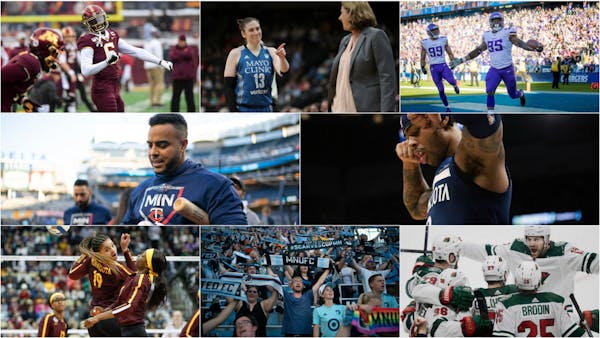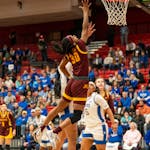In 1962, Archie Clark went from the Army to making Gophers history as one of the program's first three black scholarship basketball players.
Clark was a self-proclaimed afterthought in that class of Minnesota hoops pioneers, alongside Lou Hudson and Don Yates.
Coach John Kundla hadn't seen Clark play but offered him a scholarship based on a recommendation from a coach at Andrews Air Force Base, former Gopher Buzz Bennett.
"The University of Minnesota was the only school that even thought about me playing basketball," Clark said in a telephone interview last week.
A two-sport standout, Clark played on the Gophers baseball team, too, and was the center fielder on their 1964 national championship team.
In basketball, Clark didn't have the spotlight as much as Hudson, who was known as "Sweet Lou" to Gophers fans. But the 6-2 Clark picked up a catchy nickname of his own in the NBA, "Shake and Bake."
By the late 1960s, he was known as the first player to routinely use the crossover dribble in the pros.
"I had moves nobody could stop," said Clark, a two-time NBA all-star. "I could really get to the basket."
Minnesota Firsts: The rest of the series
Growing up around poverty and violence in Detroit as one of 12 children in his family, Clark joined the Army as a teenager hoping his military service could pay for college one day.
When the Gophers came calling after his third year in the Army, Clark was grateful. In the midst of segregation, young African-Americans had few opportunities to play major college sports at the time.
"I understood what Minnesota was about," said Clark, who became friends with several standout black Gophers football players, especially Sandy Stephens and Carl Eller.
Big Ten schools were national leaders in integrating college sports back then, largely because of Minnesota's colorblind recruiting.
In the late 1950s, Gophers football coach Murray Warmath struck gold in North Carolina with future Hall of Famers Bobby Bell and Eller.
Hudson was from Greensboro, N.C., and his former high school teammate, future Hall of Fame tight end Charlie Sanders, followed him to Minnesota in 1964.
"Coach Warmath realized the value of having black players," Clark said, and the same was eventually true of Kundla.
Freshmen were ineligible to play then, but Hudson, Clark and Yates were major contributors as sophomores in the 1963-64 season.
A 6-5 forward, Hudson led the team in scoring with his silky smooth jumper. Clark was Kundla's heady starting point guard who was already age 22 when that season began. Yates was an athletic sixth-man guard.
All three averaged double figures for a 17-win team that finished third in the Big Ten, highlighted by an upset over No. 2 Michigan at the Barn.
The Gophers won 19 games and finished runner-up to the Wolverines in the Big Ten in 1965. The following season, though, they fell to fifth after Yates was ruled academically ineligible and Hudson broke his right wrist.
Hudson famously still was dominant at times wearing a cast and shooting with his left hand. But Clark carried the team offensively, averaging 24.5 points a game.
"I didn't mind feeding Lou the ball, because he could really shoot," Clark said. "When he was injured, I had to take more responsibility."
Hudson, taken No. 4 overall in the 1966 NBA draft by the St. Louis Hawks, went on to become a six-time NBA All-Star. His jersey hangs in the rafters for the Hawks, who moved to Atlanta in 1968, just as it does at Williams Arena.
Clark rose from a fourth-round NBA pick in 1966 to a starter for the Los Angeles Lakers as a rookie and became an All-Star in Year 2, joining teammates Jerry West and Elgin Baylor.
In 1968, the Lakers traded Clark and two other players to the Philadelphia 76ers — for Wilt Chamberlain. Clark's lasting impact, though, was as a founding member of the NBA's retired players association.
Still living in Michigan, Clark remained close with Hudson, his former college roommate, until his death from a stroke in 2014.
"We realized we were pioneers," Clark said. "We were good friends until the end.
"He was like my younger brother."



